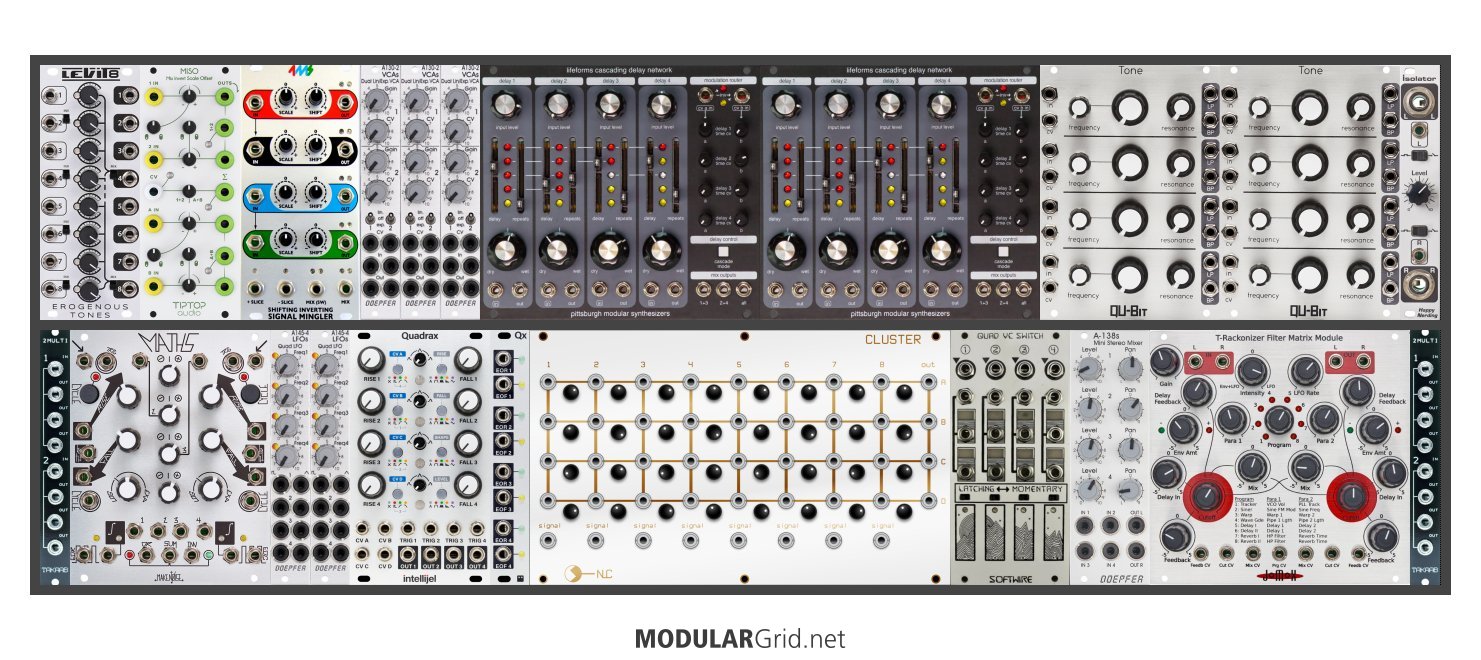Sorry if this sounds newbie-ish, but I was wondering if the idea of no input mixing can be exported in Eurorack. Something like having a matrix mixer patched into itself, or just a chain of several VCAs going into each other, or some multiples passing feedback loops between themselves. I love the idea of no input mixing, I'm imagining what sort of coolness would arise by CVing it with control modules or other stuff.
I have a Veils, a Bastl ABC and a Gargoyle Delay and I get some squarewave-like feedback tones if I cross-patch those two, but maybe there are some other modules which have more ground hum that could serve a feedback-oriented approach. Maybe DYIing them would be the answer? Or maybe this just isn't the format for this kind of explorations and I just should go with a regular no input mixer (which would sadden me, alas). If anyone has more information it would be lovely to expand on this idea.

